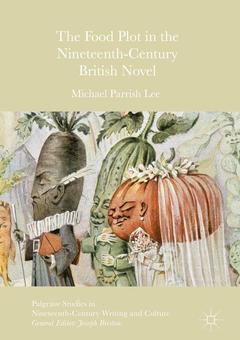Description
The Food Plot in the Nineteenth-Century British Novel, 1st ed. 2016
Palgrave Studies in Nineteenth-Century Writing and Culture Series
Author: Lee Michael Parrish
Language: English
Approximative price 73.84 €
In Print (Delivery period: 15 days).
Add to cartPublication date: 01-2020
Support: Print on demand
Approximative price 105.49 €
In Print (Delivery period: 15 days).
Add to cartPublication date: 01-2017
Support: Print on demand
Description
/li>Contents
/li>Biography
/li>Comment
/li>
From Austen to Zombies, Michael Parrish Lee explores how the food plot conflicts with the marriage plot in nineteenth-century literature and beyond, and how appetite keeps rising up against taste and intellect. Lee?s book will be of interest to Victorianists, genre theorists, Food Studies, and theorists of bare life and biopolitics. - Regenia Gagnier, Professor of English, University of Exeter
In The Food Plot Michael Lee engages recent and classic scholarship and brings fresh and provocative readings to well worked literary critical ground. Drawing upon narrative theory, character study, theories of sexuality, and political economy, Professor Lee develops a refreshing and satisfyingly deep new reading of canonical novels as he develops the concept of the food plot. The Food Plot should be of interest to specialists in the novel and food studies, as well as students and general readers. - Professor April Bullock, California State University, Fullerton, USAMichael Parrish Lee’s essays have appeared in Novel: A Forum on Fiction, Nineteenth-Century Literature, and Studies in the Novel, and his fiction has appeared in Conjunctions.
One of the first works to engage with the complex relationship between food and the nineteenth-century British novel
This study challenges the centrality of the marriage plot as a narrative device
The author's innovative, interdisciplinary approach sheds new light on iconic nineteenth century novelists from Jane Austen to Charles Dickens




